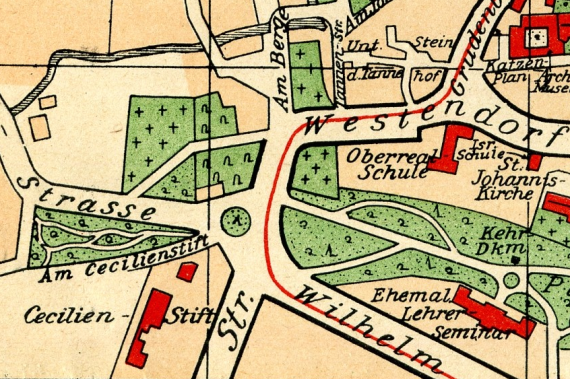Sternstraße / Westendorf (Eingang)
38820 Halberstadt
Germany
The cemetery "Am Roten Strumpf" is the oldest of three burial grounds of the Jewish community of Halberstadt. In 1644, still under episcopal protection, it could be established southwest of the Johannistor (at today's intersection Sternstraße / Westendorf). Before that, the dead had to be buried elsewhere (in Derenburg and Aschersleben?). The small, square area had been leased from the St. Johannis monastery. The name of the field refers to an earlier execution site. According to this, the executioner put on a red stocking to avoid being recognized.
Even today, the higher ground level in this oldest part (towards the southeast) is noticeable. For lack of space - so the assumption - the dead had to be buried in a second layer. After the foundation of the burial society "Gemilut Hasidim" (1693) the cemetery could be extended to the north to about twice its size in 1696 - with the support of the court factor Berend Lehmann, who was buried here himself in 1730. His gravestone with family coat of arms (Levite jug with lamb) leans today against the northern cemetery wall.
In 1770, a second expansion became necessary - again by double, now to the west, to the Johanniskirchhof. In the south, on Sternstraße, a former inn including yard and stables was leased. There the Jewish community, outside the city walls, could establish a hospital including hostel for poor and passing Jews.
A surrounding stone wall was also already in place by 1770. At the entrance gate in the northeast (today crossing Westendorf / Am Berge) two Hebrew prayer and information boards were embedded.
Inhumations took place until the 19th century. In 1938, before desecration in the November pogrom, one counted still about 600 gravestones, which were used in 1944-45 for the construction of splinter protection trenches and tank barriers. After the cemetery was restored, there are still about 150 baroque gravestones (the oldest from 1659). A visit is possible Sun-Fri, the keys are available at the Berend-Lehmann-Museum.

Add new comment